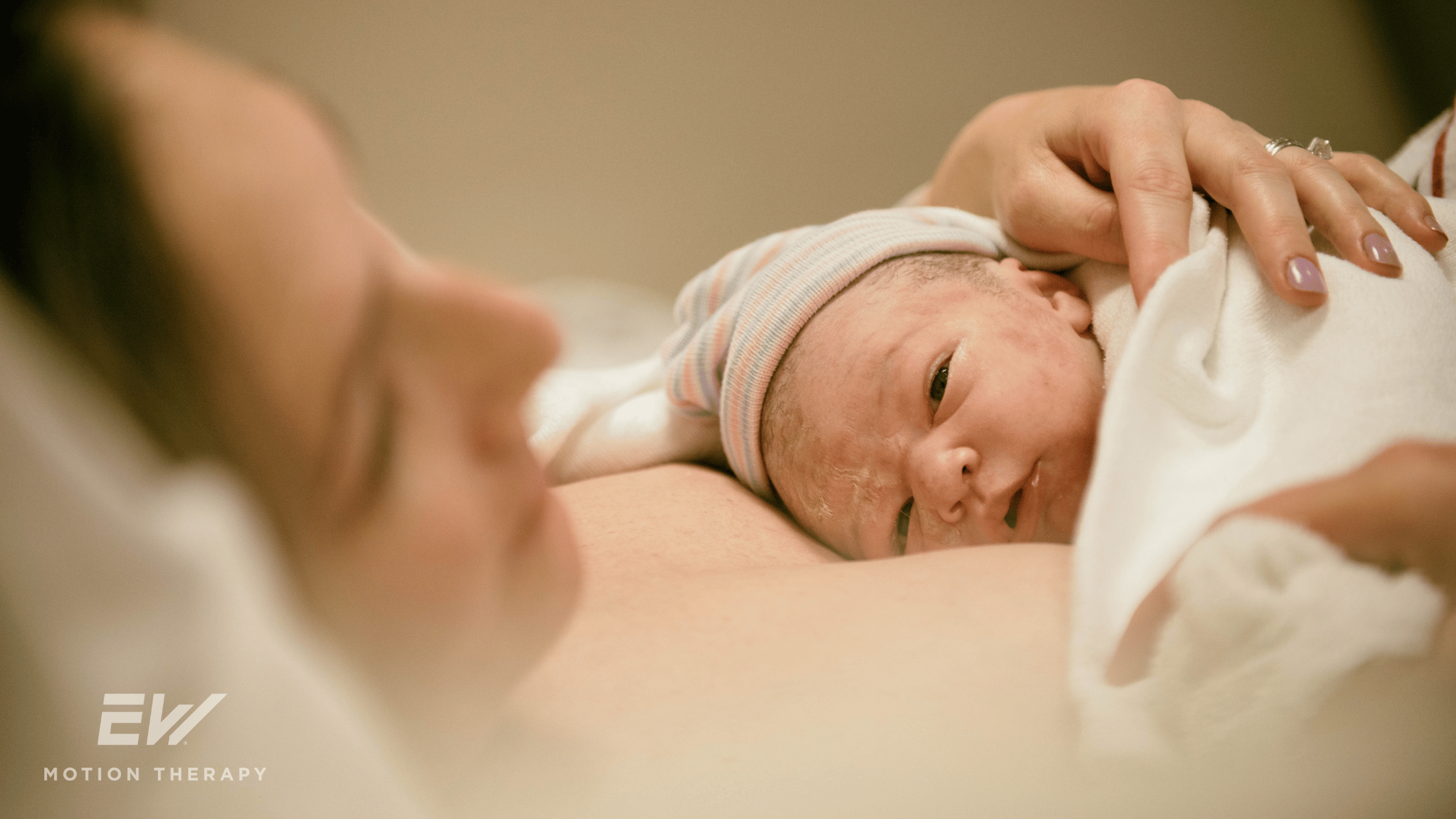How Labor Positions Affect Your Birth Experience: A Guide to Effective Positioning

Licensed Physical Therapist, PT, DPT // CFT-L1 // EW Motion Therapy Meadowbrook/280
Labor is one of the most intense experiences a female’s body can endure. While many mothers say that their baby was worth every hour of discomfort, it’s important to go into giving birth knowing which labor positions might work best for your body and potentially help speed up the process. You can determine this with your OB/GYN and a physical therapist toward the end of your pregnancy - we love helping our expecting mothers at EW Motion Therapy figure out effective, comfortable positions for labor. You may decide that our services don’t fit your needs, but you can still read on to learn more about why labor positioning is important, some positions to try, and how physical therapy can help.
Why position matters in labor
Positioning during labor is not just about comfort; it's about effectiveness. The positions a woman assumes during labor can significantly impact the progress of her delivery, affecting everything from pain management to the duration of labor. The right positions can enhance gravity's role, encourage the baby's movement down the birth canal, and increase the efficiency of contractions. This optimization not only potentially reduces labor time but can also decrease the need for medical interventions such as forceps delivery or cesarean births.
Proper positioning can help in managing the intense pain many women experience during labor. For instance, upright positions can lead to more effective contractions and less pressure on the tailbone and spine. Moreover, being in a position that feels natural and empowering can give the birthing mother a sense of control, which is crucial for mental and emotional well-being during such a vulnerable time.
Ultimately, figuring out the best positions for your labor is a conversation to have with your doctor or physical therapist at the late stages of your pregnancy, usually around 30-34 weeks. There are no best or worst positions for labor because everyone labors differently!
Positions to try during labor
Upright positions
Upright positions include standing, walking, lunging, sitting, or squatting. These positions work with gravity, helping to encourage the descent of the baby through the pelvis and helping the mother manage contraction pains more effectively. Many women find that walking or gently swaying during early labor helps manage the intensity of contractions as they build in severity. It’s important to understand that if you choose to get an epidural, you will no longer be able to be upright once the medicine starts working.
Side-lying
The side-lying position offers numerous benefits, especially if labor is prolonged or the mother needs to rest. This position can help relieve back pain, reduce the pressure on the perineum, and sometimes slow down a labor that is progressing too rapidly. It's also beneficial for women with an epidural, as it aids in maintaining good blood flow while reducing the strain on the body.
Hands-and-knees
This position, often referred to as the all-fours position, can be particularly useful if the baby is in a posterior position (facing the mother’s abdomen). Being on hands and knees can help relieve back pain and provides the baby more room to turn into the optimal position for birth. It also helps in evenly distributing the contraction pressures, which can be a relief from the intense pressure felt in more supine positions.
A note on back-lying
You may have read or heard on the internet that lying on your back, while the standard procedure for many hospitals, is not the most effective labor position. While this may be true for some women, it is the protocol of many hospitals for a reason. If you begin to experience complications during labor or delivery, this position provides the easiest access for medical professionals who might need to step in and take care of you.
Discussing labor positions with your OB/GYN
Before going into labor, it's vital to have a detailed discussion with your OB/GYN about possible labor positions. This conversation should include your medical history, any health concerns that might influence your ability to try different positions, and the facilities available at your birthing location (like birthing stools, tubs, or the freedom to walk around).
Discussing your preferred labor positions ahead of time can be incorporated into your birth plan. This preparation ensures that when the time comes, both the healthcare team and you are aligned with your comfort and delivery expectations. It's also the perfect opportunity to address any fears or concerns and explore alternative positions that might not have been considered initially.
How physical therapy can prepare your body for labor
Strengthening core and pelvic muscles
Physical therapy can play a crucial role in preparing your body for labor. A physical therapist specializing in prenatal care can help strengthen your core and pelvic muscles, which are pivotal in supporting the uterus and baby during pregnancy and labor. Stronger muscles in these areas can lead to more effective pushing during delivery. However, it is also important to be able to relax your pelvic floor so your baby has plenty of room to move through your birth canal.
Improving flexibility and endurance
Physical therapists can also work on enhancing your flexibility and endurance, preparing you for the physical demands of different labor positions. Techniques might include stretching exercises, techniques to relax your pelvic floor, working on range of motion in your hips, and cardiovascular routines that keep your stamina up and prepare you for the energy output needed during labor.
Personalized plans
A tailored exercise plan from a physical therapist can help address any specific physical concerns you might have, such as acute pain or sciatica, making your labor experience as smooth as possible. These plans often include exercises that mimic labor positions, helping you practice and determine in advance which positions feel most comfortable. They will also ensure you are educated on expectations for labor and symptoms you may experience postpartum.
Choosing the right labor positions can greatly influence your birthing experience, reducing discomfort and potentially speeding up the delivery process. Discussing these options with your OB/GYN, understanding the benefits of each position, and preparing your body through physical therapy are all proactive steps you can take to ensure a more controlled and positive labor and delivery experience. We consider it a privilege to be a part of every expecting mother’s journey we see at EW Motion Therapy, and our women’s health team will walk alongside you through your pregnancy and postpartum symptoms. If you want to learn more about how physical therapy can help you stay healthy and active during pregnancy, click the button below to download our answers to 20 frequently asked questions.


